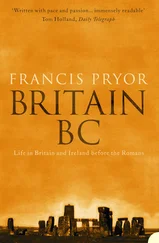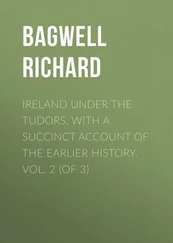Richard Bagwell - Ireland under the Tudors. Volume 3 (of 3)
Здесь есть возможность читать онлайн «Richard Bagwell - Ireland under the Tudors. Volume 3 (of 3)» — ознакомительный отрывок электронной книги совершенно бесплатно, а после прочтения отрывка купить полную версию. В некоторых случаях можно слушать аудио, скачать через торрент в формате fb2 и присутствует краткое содержание. Жанр: foreign_antique, foreign_prose, на английском языке. Описание произведения, (предисловие) а так же отзывы посетителей доступны на портале библиотеки ЛибКат.
- Название:Ireland under the Tudors. Volume 3 (of 3)
- Автор:
- Жанр:
- Год:неизвестен
- ISBN:нет данных
- Рейтинг книги:3 / 5. Голосов: 1
-
Избранное:Добавить в избранное
- Отзывы:
-
Ваша оценка:
- 60
- 1
- 2
- 3
- 4
- 5
Ireland under the Tudors. Volume 3 (of 3): краткое содержание, описание и аннотация
Предлагаем к чтению аннотацию, описание, краткое содержание или предисловие (зависит от того, что написал сам автор книги «Ireland under the Tudors. Volume 3 (of 3)»). Если вы не нашли необходимую информацию о книге — напишите в комментариях, мы постараемся отыскать её.
Ireland under the Tudors. Volume 3 (of 3) — читать онлайн ознакомительный отрывок
Ниже представлен текст книги, разбитый по страницам. Система сохранения места последней прочитанной страницы, позволяет с удобством читать онлайн бесплатно книгу «Ireland under the Tudors. Volume 3 (of 3)», без необходимости каждый раз заново искать на чём Вы остановились. Поставьте закладку, и сможете в любой момент перейти на страницу, на которой закончили чтение.
Интервал:
Закладка:
Ormonde sent Zouch and Stanley to garrison Youghal, who lost two or three men in passing the Blackwater at Lismore. The Spaniards set fire to Strancally Castle, where some of the plunder had been stored, and ran out at the first sound of the English drums. Some were shot or drowned, and the remainder crossed over to Decies in boats, ‘where they were very friendly welcomed in sight of the soldiers.’ Sir James Fitzgerald of Dromana was loyal, but his followers preferred Desmond.
Stanley and Zouch went on to Youghal, driving before them 140 cows and 300 sheep, with which they fed their men. The poor soldiers suffered dreadfully from rain and cold, for they were penniless, and unroofed houses gave but scant shelter. For horses there was no food. Nor was this misery peculiar to Munster, since Athlone required repair to the extent of 500 l. , Maryborough and Philipstown did not keep their defenders dry, and the wall in each case was ready to fall into the ditch. Leighlin and Dungarvan were almost untenable. Dublin Castle was much dilapidated, and the timber of Kilmallock was rotting. English artificers must be brought over to repair damages, ‘for lack of skill and desire to gain by the work had been the ruin of all.’ On the other hand there were signs of wavering among the rebels. A ship with 400 soldiers from the Pope was driven ashore at Corunna, and four-fifths of the men perished. Sanders was suspected of wishing to steal away, and Desmond had him carefully watched. 33 33 Pelham to Burghley, Feb. 4, 1580; Waterhouse to Walsingham, Feb. 3; G. Fenton to Burghley, Feb. 18; Lord Justice and Council to the Privy Council, Jan. 29, in Carew .
At this juncture one French and one Spanish vessel arrived in Dingle Bay with letters for Desmond and earnest inquiries for Dr. Sanders. They were well received by the country people, and the bearers of the letters were conducted to Castle Island, where they found the men they sought. The foreigners said it had been reported at the French and Spanish Courts that no Geraldine was left alive. Sanders ‘railed and reviled them’ for not performing their promises to perfect Christians; but they still maintained that 20,000 were ready in Spain to sail with James Fitzmaurice’s sons, and that France would also help as soon as the truth was known. One Owen O’Madden, a foster-brother of Desmond who was present, fell into Ormonde’s hands, and reported that Desmond and Clancare had solemnly sworn to join their forces; ‘which oath was ministered by Dr. Sanders, having a mass-book under their feet and a cloth spread over their heads.’ He believed that Lord Fitzmaurice would also join them. The confederacy would command a force of 600 gallowglasses, 1,600 kerne, and 80 horse, with 200 musketeers. Sympathy with the Geraldines was universal among the common people, but men who had something to lose were in no great hurry to commit themselves. ‘I suppose,’ said Pelham, ‘it is now considered that what foreign prince soever come, he will not allow to any freeholder more acres than he hath already, nor more free manner of life than they have under our Sovereign. And further I am told that some of the traitors themselves begin to consider that the invaders will put no great trust in those that do betray their natural prince and country.’ 34 34 Pelham to Wallop, Feb. 9, 1580; to the Privy Council, Feb. 10 and 28; to the Queen and to Leicester, Feb. 16; Lord Roche to Ormonde, Feb. 11: all these in Carew .
Pelham left Waterford about the middle of February, having with great difficulty made such preparations as would give likelihood of a successful campaign. Unable to feed pack-horses he had his provisions carried by 300 strong countrymen, and he vigorously describes the pleasures of Irish warfare. ‘Touching the comparison between the soldier of Berwick and the soldier of Ireland, alleging him of Berwick to serve in greater toil… all the soldiers of Christendom must give place in that to the soldiers of Ireland; and so much difference for ease… as is between an alderman of London and a Berwick soldier.’ And surely, said Captain Zouch, ‘the wars here is most painful, in respect that of force we make great and long journeys without victual, by which means we have great sicknesses, and, do what we can, we shall never fight with them unless they have a will to fight with us.’ But a good spirit prevailed, and some companies stood so much on their reputation that they begged to be mustered, in order that their wants might be known and supplied.
Ormonde joined the Lord Justice at Clonmel, where it was arranged that the Butlers should guard the eastern end of the Aherlow fastness. Pelham proposed to make all the country from Askeaton to Dingle ‘as bare a country as ever Spaniard set his foot in.’ At Limerick he spent more than a fortnight listening to reports of what was going on in Kerry and in Spain, and waiting for Wallop and Maltby. On March 10, he met Ormonde at Rathkeale, and each assumed his own share in the work of destruction. The Earl took the Shannon side, the Lord Justice kept inland, spoiling the country far and wide, and meeting with no enemy. Near Shanet Castle, the original seat of the Desmonds, from which their war-cry was derived, the two camps were not far apart, and the country was scoured to the foot of the mountain in which the Feale and the Blackwater take their rise. According to the Four Masters, they killed ‘blind and feeble men, women, boys and girls, sick persons, idiots, and old people.’ Four hundred were killed in the woods on the first day, and everything that would burn was burned. The next camp was at Glin, where provisions had been collected, and thither came Lord Fitzmaurice, who thought it time to declare himself on the side of the strongest. Pelham and Ormonde then determined to cross the mountain into Kerry, having heard that ships with stores had arrived at Dingle. Desmond had already gone that way, in the belief that the ships were Spanish. Passing the Feale a little above Listowel, the army marched unopposed to Tralee, and on the march Patrick Fitzmaurice, heir of the house of Lixnaw, followed his father’s example. Everything between Castle Island and Tralee was already destroyed by the rebels, and Tralee itself was burned, with the exception of the abbey. Three hundred men, under Sir William Stanley, were detached to Castlemaine, and Pelham and Ormonde started for Dingle, but were driven back by a furious snowstorm from the foot of the Corkaguiny mountains. In the meantime the ships had gone to the Shannon, and Pelham, having no means of feeding the men, was forced to withdraw Stanley’s division from Castlemaine. Clancare had promised to come to Tralee, but excused himself on account of the floods. The same reason prevented Pelham from recrossing the mountains, and he lost men and horses in fording the Feale near its mouth. The ships had arrived at Carrigafoyle, and immediate preparations were made to besiege the castle, which was held by nineteen Spaniards and fifty natives. The commandant was Captain Julian, ‘who reported himself to be a very notable engineer,’ and who had undertaken the defence at Lady Desmond’s request.
While the guns were being landed, Pelham went forward to view the place, and had a narrow escape from a shot. ‘The villains of Spaniards, and the traitors,’ said Ormonde, ‘railed like themselves at Her Majesty, especially the Spaniards, who had named the King of Spain King of Ireland, which, or it be long, God willing, they shall dearly pay for.’ Julian probably trusted in the strength of the castle, which was eighty-six feet high, surrounded by water, and defended by several outworks. On the land side there were two separate ditches, divided by a wall, and a strong earthwork. Vessels of 100 tons could go up to the wall at high tide. The pieces used in the attack were three cannons, one culver, and one culverin – not a formidable battery according to modern ideas, but too much for the old castle, even with Julian’s additional defences. The hyperbolical Four Masters say such guns had never yet been heard in those parts, and that their tremendous and terror-awakening roar penetrated every glen from Mizen Head to Tuam. A cannonade of six hours on two successive days was enough to make a practicable breach, both in the barbican and in the inner walls, which crushed many as they crumbled. The storming party soon mastered all but one turret, which stood farthest from the battery and was still intact. The fire was directed upon this point, and two or three shots dislodged the garrison, of whom, says Zouch, ‘there escaped not one, neither man, woman, nor child.’ Those who swam were shot in the water, others were put to the sword, and a few who surrendered, including one woman, were hanged in the camp. Captain Julian was kept prisoner for two or three days and then hanged. The people began to curse Desmond for bringing all these misfortunes upon them. He answered that, if no help from Pope or Spaniard came before Whit Sunday, ‘he should seek a strange country and leave them to make their compositions.’ The castles of Balliloghan and Askeaton were abandoned by their defenders when they saw the fate of Carrigafoyle. Those at Askeaton escaped across the water, having made an unsuccessful attempt to blow up the castle. Pelham occupied this last stronghold, and the war was turned into a hunt. 35 35 Pelham to the Queen and to Burghley, April 1, 1580; and to the Queen, April 5; Zouch to Walsingham, April 8. Hooker.
Интервал:
Закладка:
Похожие книги на «Ireland under the Tudors. Volume 3 (of 3)»
Представляем Вашему вниманию похожие книги на «Ireland under the Tudors. Volume 3 (of 3)» списком для выбора. Мы отобрали схожую по названию и смыслу литературу в надежде предоставить читателям больше вариантов отыскать новые, интересные, ещё непрочитанные произведения.
Обсуждение, отзывы о книге «Ireland under the Tudors. Volume 3 (of 3)» и просто собственные мнения читателей. Оставьте ваши комментарии, напишите, что Вы думаете о произведении, его смысле или главных героях. Укажите что конкретно понравилось, а что нет, и почему Вы так считаете.












